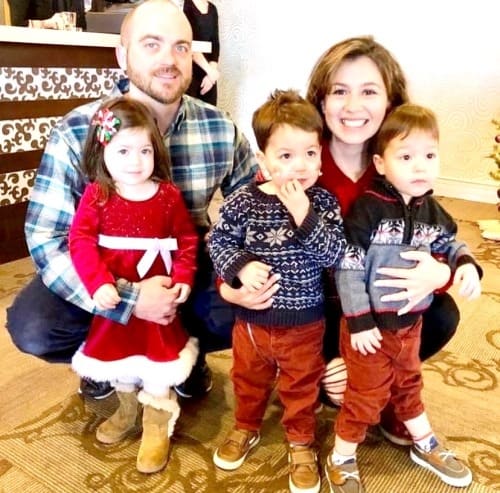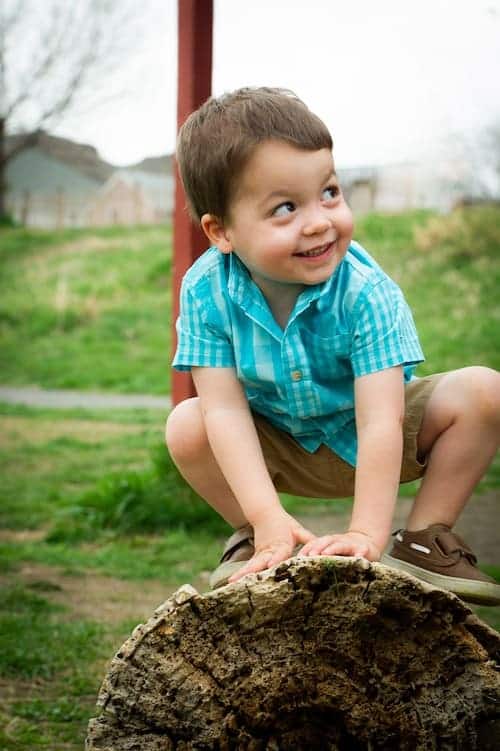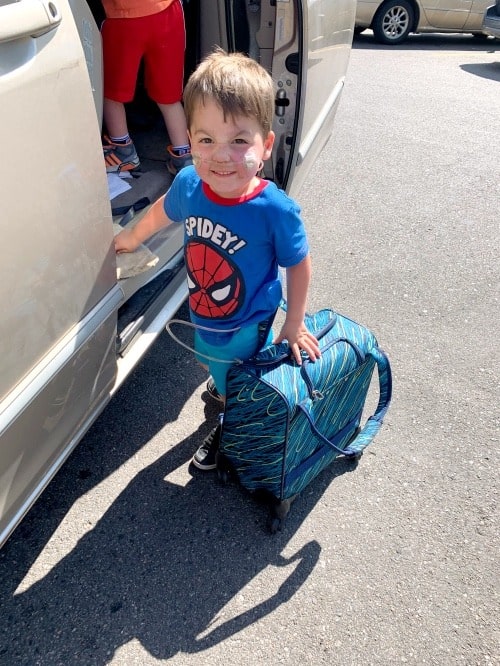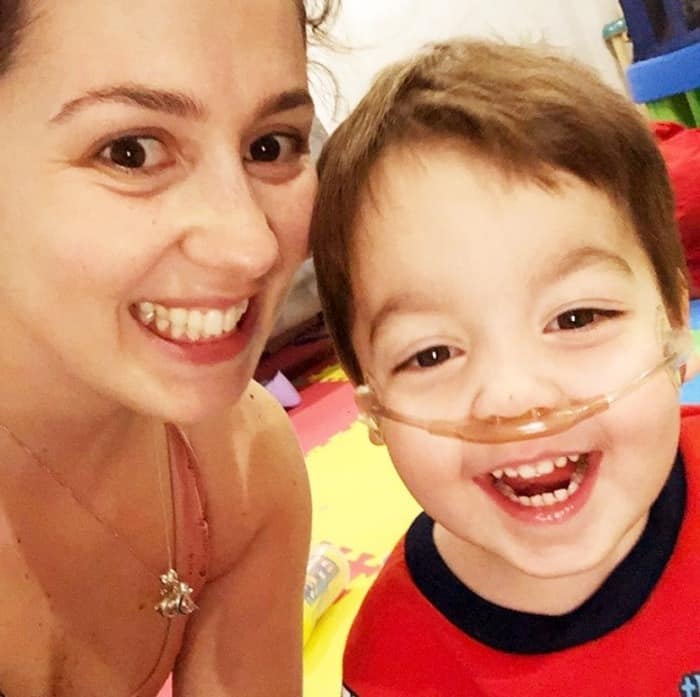Last updated on February 5th, 2024 at 04:47 pm



Learn 5 tips for starting school with a disability plus the specific challenges of a child starting school with a portable oxygen tank.
As his brother and sister ran toward the classroom door, Sammy refused to wear his backpack. I couldn’t believe the second day of school would be worse than the first: I would have to take him home with me and separate him from his siblings, just like he was years ago when I rushed him to the Emergency Room.
Sammy was my firstborn triplet, my baby A. He sat in the very bottom of my belly, while brother and sister kicked my ribs up high. He came out the heaviest, had the least trouble in NICU, learned to breastfeed first, and put on weight the easiest. Seeing how he thrived in the womb and at birth, I never imagined the scare that would come three months later.

When Sammy was 3-months-old he started showing rapid breathing, although he had no other cold-like symptoms. After several hospitalizations, he was finally diagnosed with a rare lung condition called NEHI, Neuroendocrine Hyperplasia of Infancy. While the diagnosis was somewhat of a relief, learning he would have to stay on oxygen 24/7 for the first few years of his life was quite the shock.
As time went on, we adapted our busy triplet routine to the cannulas, tanks, charging stations, and long tubes. As he grew, we develop new ways to help him keep up with his siblings while being on an oxygen tank.
In the back of my mind, I always wished he wouldn’t have to go through this when starting school, but considering his condition is of infancy, I knew the chances of him going to school on a portable oxygen tank were high. And so it happened.

The Challenge of Starting School With a Portable Oxygen Tank
When Sammy turned 3-years-old and graduated from his Early Intervention services, he didn’t qualify to continue on into preschool. But because of my employment situation, we decided all three kids should start school.
After going through the trouble of finding a place that had three spots available, and would work for us financially, came the challenge of accommodating a special needs child with a portable oxygen tank.
While at home he roams freely using a long cable attached to the oxygen concentrator (or oxygen tank), I soon learned this wouldn’t be the case in school: it would be a tripping hazard. The solution seemed simple enough in my head: he could wear a backpack with a smaller tank on his back; except the smallest tank was still too heavy for a 3-year-old, and insurance wouldn’t cover a lighter alternative (a portable oxygen concentrator).

The First Day of School With a Backpack Portable Oxygen Tank
On his first day of school, the teachers tried helping him adapt by wearing the backpack portable oxygen tank, but by day two it was clear it would not work. I brought Sammy home, defeated.
What went on in the following weeks, between several phone calls, doctor visits, and paperwork, was one of my first real lessons on how important it is to advocate for your child and never give up until you find the help you need.
Here are the 5 steps I recommend going through before your child who has a disability or special needs starts school:
Talk to Your Pediatrician And/or Specialist
Because my son didn’t qualify for services beyond Early Intervention, the biggest help I received came from the Children’s Hospital where he sees his pediatrician and pulmonologist. The hospital’s social worker was actually the one that mediated all communication between the school and the hospital.
Make sure you ask about their recommendations for school, especially because they will have to fill out a general health assessment form upon enrollment.
If your child qualifies for an Individualized Education Program (IEP), you should receive a lot of support from your service coordinator, who will work with you and the school directly.

Mention Your Child’s Condition Right Away
When you start looking for a school or daycare, be upfront about your child’s condition and ask if they’ve had experience with it before. One of the reasons why we struggled was because the schools we found had never had a child on an oxygen tank before.
While they wouldn’t necessarily turn you away, it can make the whole process more challenging. Definitely make sure you are upfront about it.
Meet with the School Nurse
The school will probably arrange a meeting with the nurse and teachers, but it’s a good idea to request it anyway. Again, if you’re getting assistance through the IEP service coordinator, they should help you with all of this as well.
In public schools, there’s also something called a 504 Plan that is developed to ensure a child with disabilities receives appropriate accommodation in school. Get informed and also ask if you can have a meeting to discuss a plan for your child.

Talk to Your Child
While we know how important it is to prepare our kids for school and talk about what to expect, I can’t stress enough the importance of talking to your child that has a special need. That’s something I definitely didn’t do enough and after going through this whole process I now understand it would have made a difference.
Depending on your child’s condition and age, it might not feel like they are understanding, but kids thrive on predictability, so you can never prepare them too much.
Be Relentless in Advocating for Your Child
As a parent of a child with a disability, you probably already know how to do this very well, but going through the hoops of the educational system is hard enough without a disability. Don’t be afraid to ask questions, leave messages, and call back if you don’t get a response.
I’ve been blessed to meet incredible people that helped me find answers faster, but it doesn’t always work like that. If you don’t do it, nobody else will!
As for Sammy, he now uses a roller bag and wheels it around proudly in the classroom with his portable oxygen tank. He’s actually the one that never complains about going to school and is always looking forward to playing with this friends. From such a young age, he’s already showing everyone – including his overprotective mama – that nothing will hold him back!

Marta Spirk is a triplet mom and success coach. Her focus is teaching moms how to define & create their own happiness from within regardless of what’s going on around them by using NLP strategies and positive psychology. Through her podcast Mom Does It All and her programs, she hopes to encourage and uplift all moms to step into their own power and realize they can DO IT ALL!







